
Jul '12 - Jan '13
One does not search for misery, does not set afoot bound for the depths of hell, or make haste for the dwelling of pain. This sentiment however, befalls upon the advent of my first 3 days of the 10-day course. For 10 days one must live like a monk, saying goodbye to one’s beloved steak and potatoes, 8 o'clock alarm, and warm, insect-free shower. There are only five activities one finds himself performing. In order of time allotted: meditating, sleeping, eating, walking, and cleaning. This overzealous allotment of activities provides for a rigid program, and combined with the dissociation of sexes, makes any architect's gears begin to turn.
There are two main roads, which trisect the site and separate meditation spaces from the residences & dining hall. Between these two roads lie three Dhamma Halls and the pagoda. The main Dhamma Hall is on axis with the pagoda, as the two smaller Dhamma Halls lie aligned, creating a central courtyard. The number of gentlemen to ladies was 3 to 1, thus giving president to the males in occupying the central Dhamma Hall, and leaving Dhamma Hall 3 to the ladies.
The Dhamma Hall itself was in the midst of 3500 sqft. The hall was naturally lit and ventilated by windows at base level, as well as clearstory. Twenty four ceiling fans ran at full blast making it the coolest space at the center, an unexpected luxury for the 48 men who sat on 9 sqft of beaten and mashed, rock hard pillows. The teacher sat aloft on a blanketed chair facing the students, as his assistants sat on the right facing him. This configuration was held upwards of 10 hours a day.
I imagine that when Adam brought Eve back to his bachelor pad, it resembled the living quarters. Quite bare and lowly, the importance rest in the essentials of opposing windows, acceding to the much-needed cross ventilation and window screens. However, these were rendered useless by the 3/4-inch gap at the base of the door and the bug sized vacancy sign in the form of the glowing fluorescent bulb beyond. Homage must be paid to our guardians “the geckos,” which occupied our rooms to rid us of the pesky intruders to which we were sworn to not extirpate.
The pagoda, to which its true meaning must mean oven, is a circular collection of private meditation cells. There are three circumambulating corridors, double loaded, and elevated in height in regards to proximity to the center. The center itself is left open, observant and objective like the mind of the enlightened. Every meditation is to face this center when meditating.
I asked my teacher about the layout of the complex, to which he stated that every meditation center conforms to the same layout and has been so for the history of the center. Also, it must be located outside the city as to avoid such auditory nuisances, but no more such that it becomes inaccessible. And of course, it is to be surrounded by nature, full of flora, trimmed lawns, and shady trees, and contain walking paths for exercise.
And alas, we reach my critique. Firstly, I must address the lack of adequate walking paths. There exists only a football field's length of beaten gravel in which one is to walk from a vine-swallowed fence, to a small sign indicating the boundary for our mortal selves. There is no meandering, no quiet garden nooks, not even a bench to occupy while one ponders his sanity. Secondly, program adjacencies were such that women were bound into their corner of the site, and left exposed to the prodding eyes of hungry men while pacing their 100 yards. Lastly, the dining hall lacked the use of natural day lighting and cross ventilation to which the other structures were accustomed. Perhaps dismembering its rooms would allow for flanking windows.
The center itself is shackled from design to philosophy. It survives solely on donation of students, and as slow as students come, is as slow as the center is built. There are no funds for extravagant feats and costly materials here. Perhaps a Vipassana meditation center in Malibu could collect sufficient monies for a Koolhaas programmatic reinvention.
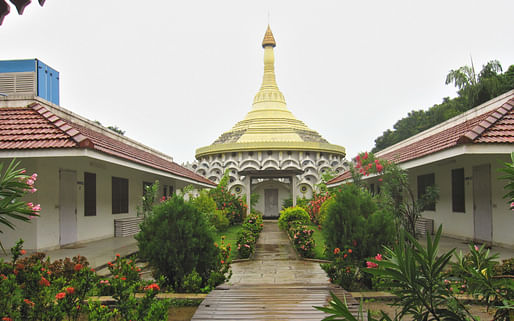
The pagoda and flanking Dhamma Halls
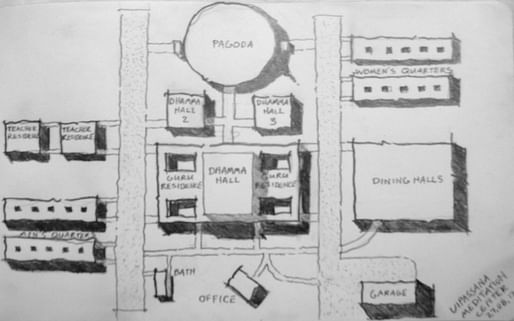
Complex site plan

Walking path and Dhamma hall
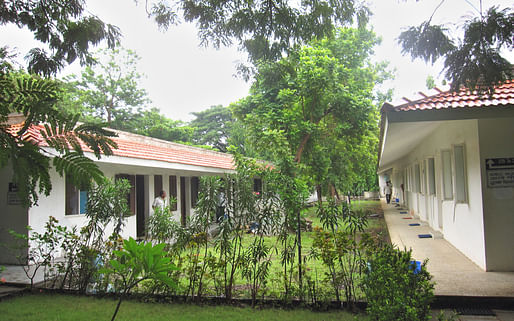
Men's residences
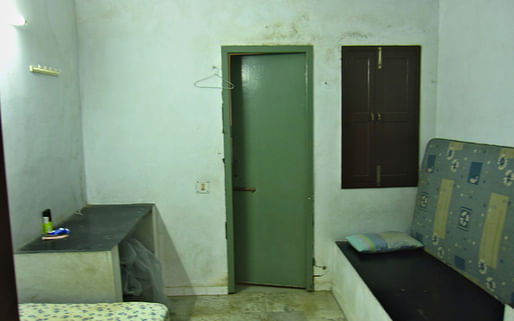
A monk's quarters
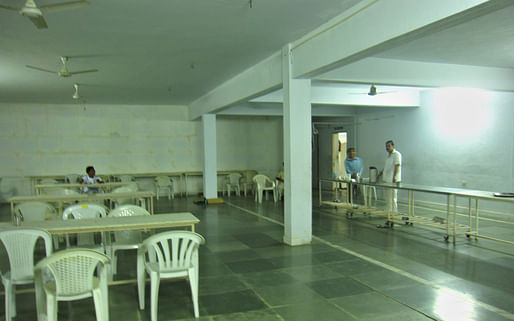
The dining hall
An Indo Inquisition is a thirteen-week train expedition across India. The journey will document the influences of international modernism and British occupation, as well as compare the effects of wealth accumulation, culture, religion, and poverty with economic growth and their effect on the built environment.
5 Comments
Thanks for the blog. I have been reading your postings with much interest while one of the people closest to me has been planning her 90 day trek of India. She left yesterday.
She has been a vipassana meditator for a couple years, and I recently started, as well. I would love to hear your reflections of your 10 day course, as I think the silence, rigor, and asceticism you adopt are an incredible workout for the mind of the designer.
Thanks again for the blog!
Duane
cool
Duane, I wish all the best for your traveler friend. India is a land of many adventures and she will surely bring back the best to share with you. I am a beginner in Vipassana just as you, and I must confess was surprised by the rigor of the course. It is difficult, in our fast paced world, to slow down enough to just feel and I often found my mind wondering. The first three days were the most difficult, as pain becomes almost constant, but I found ways to manage it. I began by imagining I was leaning against a tree, the pain would subside, my mind would wonder, the pain returned. I slowly learned to concentrate on it, embrace, and observe it, and this is when I learned the most. A feeling of great accomplishment overwhelmed me the morning of the 10th day, and I left feeling quite peaceful. I have not yet had the opportunity to search for any alterations in my design to which I may attribute to Vipassana, but I will say it has effected the way I see architectural materials as 'Anicca' becomes apparent. I now see the heavy stone walls of the temples i visit as the epitome of sustainability, as although they are impermanent, it is of no comparison to the fraction of time in which we live.
amlocke,
Thanks for sharing your experience at the Vipassana center. Brings me back my memories of a 10 day camp almost 11 years back - I had just finished my high school back then in India and was recommended this course by a friend. Though I was impressed with what I felt in those 10 days I quite never continued meditating after I came back from the course (you know how a mind of a teenager can wander in those college years).
But after years now I heard to S.N. Goenka's dhamma discourses on YouTube and all those things still made sense to me just like they did while I was there. And now, I am trying to get back to vipassna by meditating almost every day in the morning. My suggestion to you would be continue what you learnt there at the center on a priority basis as a part of your daily schedule so that you don't commit the same mistake that I did. I still wish I can rewind those 11 years that I lost by not meditating even though I was lucky to come across this great at a art early stage in my life. As Mark Twain says, "There Are Two Most Important Days In Your Life….The Day You Are Born, And …..The Day You Find Out Why", I guess it took me a while to find out why but I am glad I did :)
All the very best on this beautiful journey that you have started. Keep us posted.
May all beings be happy!
Thanks for sharing your Vipassana story, and I'm glad to hear you're getting back into it. Currently, I'm trying to maintain an early meditation session as well, but self discipline is difficult and I sometimes miss due to traveling. Nevertheless, I shall continue to pursue Vipassana. Personally, I found the course reassuring as some of my previous beliefs on materialism and desire were already aligned with What S.N. Goenka was saying. Perhaps that is what accounts for my current happiness. Thanks, and best wishes to you as well Duane. Keep reading, coming up is Hampi and Mumbai!
Block this user
Are you sure you want to block this user and hide all related comments throughout the site?
Archinect
This is your first comment on Archinect. Your comment will be visible once approved.